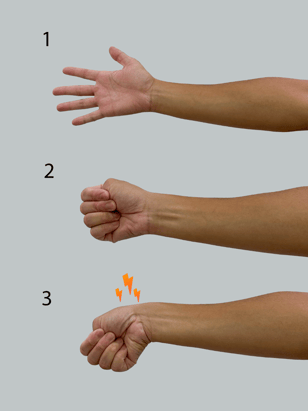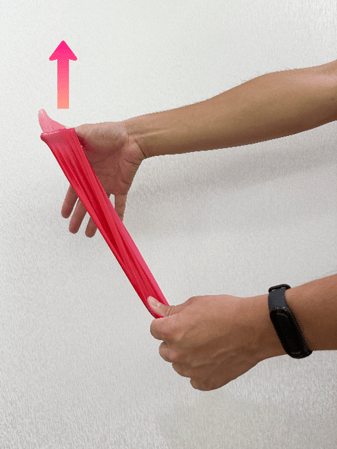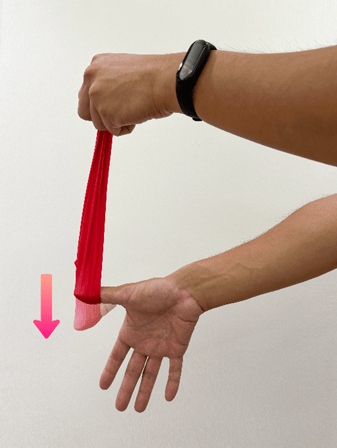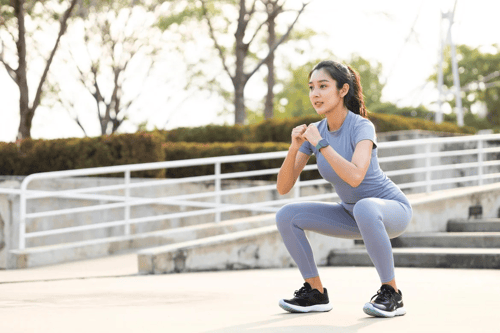De Quervain tenosynovitis (Mommy’s wrist) is a common urban disease that is part of what is known collectively as repetitive strain injury (RSI) . Most common clinical patients are people who need to perform repetitive manual work, such as people playing video games for a long time, prolonged handhold of mobile phones, housewives and chefs.
How do you diagnose and adjust Mommy's wrist? Check your hands with simple self-examination and try relieving the mommy’s wrist with physiotherapist tips.
What is the cause of de Quervain tenosynovitis
De Quervain tenosynovitis is a painful condition caused by repetitive tendon strain in the hand. The cavity around the tendon on the thumb side swells, compressing the tendons and synovium of the extensor brevis and abductor longus muscles, narrowing the channel, inflaming and swelling the tendons and synovial membrane, causing pain on the thumb side of the wrist. In severe cases, tendons may become sticky, and the movement of the thumb and wrist may be restricted. Because many of the patients are postpartum women who need to hold their babies for a long time, or housewives who often do housework, it is also commonly known as "mommy's wrist".
Who are prone to have de Quervain tenosynovitis
- Women between 30 and 50 years old, mostly housewives
- Individuals immersed for long periods using computer mouse and devices with similar grip like mobile phones and mobile gaming gadgets
- Mothers or care-givers who need to hold the newborn baby's head for a long time
- Bank and accounting staff
How are housewives prone to De Quervain tenosynovitis?
Housewives are particularly susceptible to De Quervain tenosynovitis due to the repetitive nature of household chores and caregiving activities. Daily tasks such as cooking, cleaning, and especially lifting and carrying children involve repetitive wrist and thumb movements. These activities often require gripping and wringing motions that significantly strain the tendons in the wrist and thumb. Over time, the cumulative effect of these motions can lead to inflammation and the painful symptoms associated with De Quervain tenosynovitis. Recognising these risk factors empowers housewives to take preventative measures, such as modifying how they perform certain tasks and incorporating hand and wrist exercises into their routine, to reduce the risk of developing this condition.
De Quervain tenosynovitis symptoms
- Inability to exert force or persistent pain in the wrist near the thumb; the pain may extend from the wrist to the forearm and up to the elbow joint
- Pain, redness, swelling and warmth (cardinal signs of inflammation) in the base of the thumb and/or adjacent wrist area
- The pain worsens when you twist a towel, write, pick up something, etc., and perform actions that require force or rotation of the wrist
Mobile device use and de Quervains tenosynovitis
The widespread (mis) use of handheld mobile devices and smartphones have led to increased cases of De Quervain. Other common conditions that may be related are:
- Carpometacarpal joint inflammation
The carpometacarpal joint is located on the outside of the thumb and is important for thumb movement. Many people hold mobile phones with one hand and slide their thumb up, down, left and right. The carpometacarpal joint exerts force repeatedly, which may cause inflammation of the carpometacarpal joint.
- Trigger finger, Game-boy thumbs
Trigger finger is also known as “game-boy thumbs”. When the thumb is repeatedly clicked up and down too long or with excessive force, it may cause coating. The trochlear tissue of the tendon becomes thickened, nodular, swollen and painful.
A few people will use their wrists to support the phone, resulting in tennis elbow. Holding the phone with one hand for a long time may cause muscle pain near the elbow on one side.
How to diagnose and test for De Quervain tenosynovitis?
To diagnose Mommy's wrist, in addition to seeing a specialist for examination, a physiotherapist teaches you how to self-examine “mommy's wrist the “Finkelstein’s Test”:

- Straighten your arms and open your palms
- Bend the thumb inward, wrap the thumb with the other 4 fingers, and make a fist.
- Press your fist in the direction of your tail finger
If there is pain at the base of your thumb, it may mean you are suffering from "Mommy's wrist". This is called a “positive Finkelstein’s Test”.
De quervain's tenosynovitis treatments
Quick Recovery with the PRICE Method for Mommy's Wrist
The acute phase of mommy's wrist calls for immediate, hopeful action, and the PRICE technique offers a simple, effective roadmap to relief:
- P (Protect): Safeguard your wrist with a specialised guard to prevent further injury.
- R (Rest): Pause activities that aggravate the pain, giving your wrist the calm it needs to heal.
- I (Ice): For the first 48 hours, apply ice to reduce swelling and pain—20 to 30 minutes, 3 to 5 times daily. Then, switch to gentle warmth to soothe the area.
- C (Compression): Use an elastic bandage for slight pressure to ease swelling and support recovery.
- E (Elevation): Lift your wrist above heart level with gentle rotations to decrease swelling and promote comfort.
Adhering to the PRICE method helps manage symptoms and sets the foundation for a quicker, more hopeful recovery journey.
Without due intervention, the symptoms of the acute attack may persist for weeks to months and become a chronic condition that may include more restricted wrist and thumb movement and even numbness. Generally, your family doctor may prescribe pain relievers and anti-inflammatory and refer you to physiotherapy services. A physiotherapist will provide personalized treatment for De Quervain tenosynotis conditions based on the patient's condition, such as manual therapy, electrotherapy, stretching, and strengthening exercise therapy.
2 simple movements to stretch tendons

1. Use the muscle band to wrap the thumb, straighten the thumb upward, hold for 5-10 seconds each time, repeat 20 to 30 times

- Use the muscle band to wrap the thumb, straighten the thumb downward, hold for 5-10 seconds each time, repeat 20 to 30 times
How to prevent mommy’s wrist?
- When holding a baby, use the strength of your arms, shoulders and core muscles to assist. Avoid using only your fingers to exert force, which will bear too much weight on your fingers and wrists
- Be careful not to use your thumb excessively or for too long when breastfeeding
- Avoid using your thumb repeatedly for long periods when doing housework
- Try to use a trolley to carry heavy items
- When using the floor mop, bend your body slightly and avoid using only your arms to drive the floor mop
- Do not lift heavy objects or carry children for long periods
- Perform muscle strength training on the thumb tendon. Put a rubber band on your fingers to make opening and closing movements, and use the rubber band's elasticity to train the tendon's strength
- Knead the base of your thumb or wrist to relieve tight tendons
If you are suffering from mommy's wrist or other tendon strain problems, consult your doctor as soon as possible and be referred to a physiotherapist according to your needs to help you comprehensively improve your pain.

References
- Mayo Clinic. De Quervain tenosynovitis. 23 Nov 2023 Retrieved from https://www.mayoclinic.org/diseases-conditions/de-quervain-tenosynovitis/symptoms-causes/syc-20371332
- Cleveland Clinic. De Quervain tenosynovitis. 23 Nov 2023 Retrieved from https://my.clevelandclinic.org/health/diseases/10915-de-quervains-tendinosis
- Gleneagles Hospital. De Quervain's Tenosynovitis. 23 Nov 2023 Retrieved from https://www.gleneagles.com.sg/conditions-diseases/de-quervains-tenosynovitis/symptoms-causes
- O’ Neil, Barbara A., et. al., “Chronic occupational repetitive strain injury.” Canadian Family Physician, 2001 Feb; 47:311-316, Retrieved on 23 January 2024, from, https://www.ncbi.nlm.nih.gov/pmc/articles/PMC2016244/
- Xinyu Nie, et.al. “Smartphone usage behaviors and their association with De Quervain’s Tenosynovitis (DQT) among college students: a cross-sectional study in Guangxi, China”. 2023 November 16. BMC Public Health, 2023; 23:2257. Retrieved on 23 January 2024, from https://www.ncbi.nlm.nih.gov/pmc/articles/PMC10652590/
 Central General Practice
Central General Practice
 Repulse Bay
Repulse Bay
 Clearwater Bay
Clearwater Bay
 BodyWorX Clinic
BodyWorX Clinic
 Central Specialist Clinic
Central Specialist Clinic
 MindWorX Clinic
MindWorX Clinic
 Partner Clinics
Partner Clinics
 Family Clinic
Family Clinic
 OT&P Annerley Midwives Clinic
OT&P Annerley Midwives Clinic





